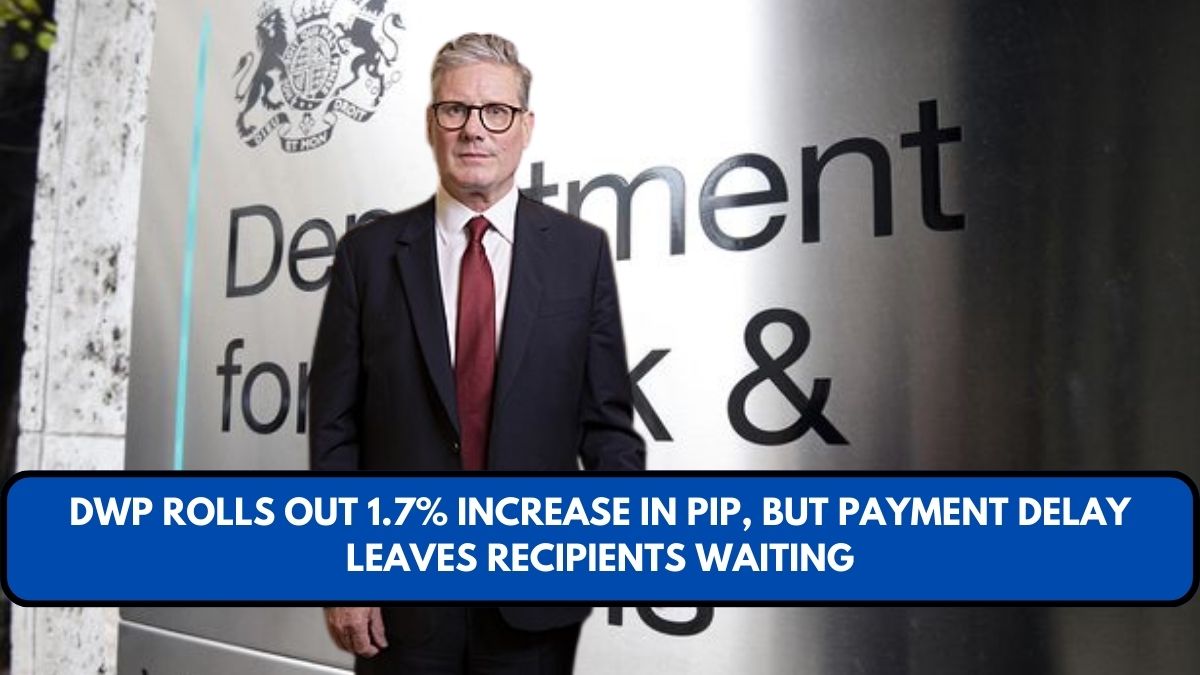As of April 7, 2025, new Personal Independence Payment (PIP) benefit rates came into effect across the United Kingdom. But while the Department for Work and Pensions (DWP) has officially rolled out a 1.7% increase in weekly PIP rates, many claimants are unlikely to see the full financial benefit until May.
Why the Delay?
The reason lies in how PIP is structured: payments are typically made every four weeks and often in arrears, meaning they reflect past entitlement periods. For most claimants, the April boost won’t align with their existing payment schedule until their next full cycle begins in May.
“The new rates are active from April 7, but depending on your payment cycle, the boost may not appear until the following month,” the DWP explained in a public advisory.

Updated PIP Rates for 2025/2026
The modest 1.7% increase adjusts both the Daily Living and Mobility components of PIP. These changes are part of the UK government’s annual uprating of benefits to keep pace with inflation.
Daily Living Component:
- Standard Rate: £73.90 per week (up from £72.65)
- Enhanced Rate: £110.40 per week (up from £108.55)
Mobility Component:
- Standard Rate: £29.20 per week (up from £28.70)
- Enhanced Rate: £77.05 per week (up from £75.75)
If you qualify for both enhanced components, your total weekly payment would now be £187.45, which equals £749.80 every four weeks.
Extra Support Payments Also on the Way
Aside from the regular PIP payments, the UK government has introduced additional support measures in 2025 aimed at helping low-income households navigate the rising cost of living:
- A £500 cost-of-living support boost will be distributed across the year in three separate payments to benefit claimants, including those receiving PIP. There is no need to apply—payments are automatic, according to a DWP announcement.
- A £150 Disability Cost of Living Payment is scheduled for mid-2025, targeting individuals with qualifying disabilities to help with utility bills, healthcare costs, and transportation.
These initiatives are part of the government’s broader effort to protect vulnerable citizens as inflationary pressures continue into 2025.

What Claimants Should Know
For those concerned about missing out on the benefit increase, it’s important to know that the delay is not due to eligibility or administrative issues—it’s simply the nature of how payments are processed.
If you believe you haven’t received the correct payment by mid-May, you are advised to:
- Check your Universal Credit or PIP account
- Contact the PIP enquiry line at 0800 121 4433
You can also view your benefit statement through your online DWP account to confirm when the new rate takes effect.
Future Reforms May Affect PIP
While the increase in rates offers a welcome financial boost, long-term prospects for PIP may be affected by ongoing welfare reform proposals. Government discussions are underway to tighten eligibility rules, particularly for claimants with mental health conditions, which could impact future assessments and approval rates.
Think tanks such as the Institute for Fiscal Studies (IFS) and Resolution Foundation have highlighted that stricter evaluations could reduce caseloads but may also risk excluding genuinely vulnerable individuals.
Summary
- New PIP rates began April 7, 2025
- Many claimants will not see the increase until May due to payment cycles
- Daily Living and Mobility components both received a 1.7% increase
- Extra support includes a £500 boost and a £150 Disability Payment in 2025
- Check your account and contact DWP if the new rate hasn’t appeared by mid-May
This article has been carefully fact-checked by our editorial team to ensure accuracy and eliminate any misleading information. We are committed to maintaining the highest standards of integrity in our content.

Deepak Grover is a dedicated content writer at OTE News, specializing in government affairs, public policy, and current events. With a keen eye for detail and a passion for factual reporting, he ensures readers receive accurate and insightful news. Deepak holds a degree in Political Science and has experience in research-driven journalism.
When not writing, he enjoys reading historical books, exploring hiking trails, and staying updated with global political trends. His commitment to ethical journalism makes him a trusted voice at OTE News.




